Mercedes EQS vs Tesla Model Y – Which model is better for everyday use?
Both models have their strengths – but which one suits you more?
Compare performance, efficiency, price and space directly: Mercedes EQS or Tesla Model Y?
Costs and Efficiency:
Looking at overall running costs, both models reveal some interesting differences in everyday economy.
Tesla Model Y has a convincingly advantage in terms of price – it starts at 38600 £, while the Mercedes EQS costs 93900 £. That’s a price difference of around 55338 £.
In terms of energy consumption, the advantage goes to the Tesla Model Y: with 13.90 kWh per 100 km, it’s to a small extent more efficient than the Mercedes EQS with 16.50 kWh. That’s a difference of about 2.60 kWh.
As for range, the Mercedes EQS performs distinct better – achieving up to 816 km, about 194 km more than the Tesla Model Y.
Engine and Performance:
Power, torque and acceleration are the classic benchmarks for car enthusiasts – and here, some clear differences start to show.
When it comes to engine power, the Tesla Model Y has a slightly edge – offering 627 HP compared to 544 HP. That’s roughly 83 HP more horsepower.
In acceleration from 0 to 100 km/h, the Tesla Model Y is distinct quicker – completing the sprint in 3.50 s, while the Mercedes EQS takes 4.40 s. That’s about 0.90 s faster.
In terms of top speed, the Tesla Model Y performs a bit better – reaching 250 km/h, while the Mercedes EQS tops out at 210 km/h. The difference is around 40 km/h.
There’s also a difference in torque: Mercedes EQS pulls significantly stronger with 858 Nm compared to 493 Nm. That’s about 365 Nm difference.
Space and Everyday Use:
Cabin size, boot volume and payload all play a role in everyday practicality. Here, comfort and flexibility make the difference.
Both vehicles offer seating for 5 people.
In curb weight, Tesla Model Y is clearly perceptible lighter – 1976 kg compared to 2545 kg. The difference is around 569 kg.
In terms of boot space, the Tesla Model Y offers distinct more room – 822 L compared to 610 L. That’s a difference of about 212 L.
In maximum load capacity, the Tesla Model Y performs somewhat better – up to 2022 L, which is about 252 L more than the Mercedes EQS.
When it comes to payload, Mercedes EQS a bit takes the win – 565 kg compared to 472 kg. That’s a difference of about 93 kg.
Who comes out on top?
Overall, the Tesla Model Y shows itself to be is largely superior and secures the title of DriveDuel Champion.
It convinces with the more balanced overall package and proves to be the more versatile choice for everyday use.
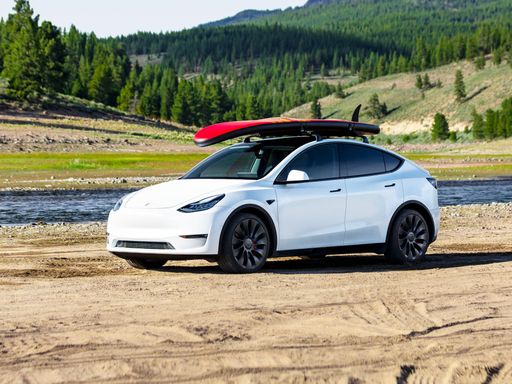
Tesla Model Y
Mercedes EQS
The Mercedes-Benz EQS redefines luxury in the realm of electric vehicles, combining exceptional comfort with cutting-edge technology. Its sleek and aerodynamic design is a testament to both elegance and efficiency, setting new standards for the brand. Inside, the EQS offers a serene and spacious cabin equipped with the latest advancements, ensuring a refined driving experience.
details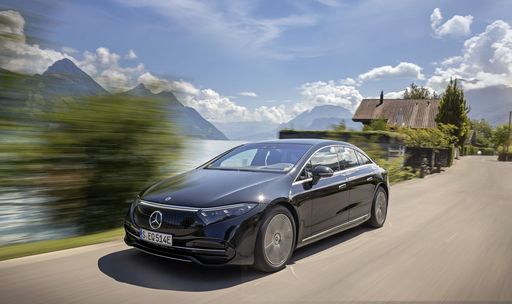 @ group-media.mercedes-benz.com
@ group-media.mercedes-benz.com
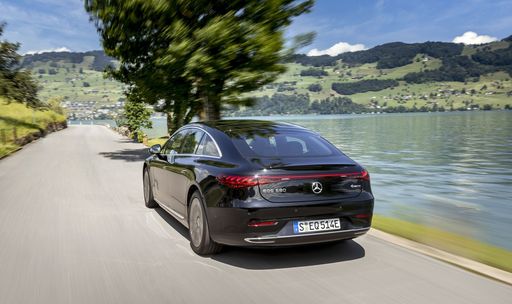 @ group-media.mercedes-benz.com
@ group-media.mercedes-benz.com
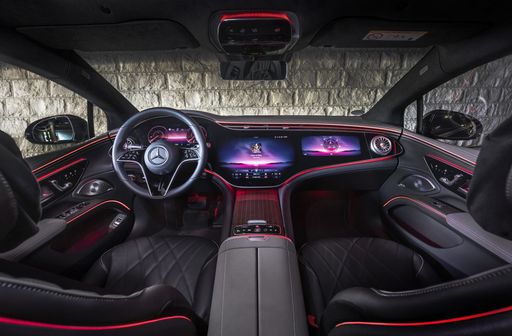 @ group-media.mercedes-benz.com
@ group-media.mercedes-benz.com
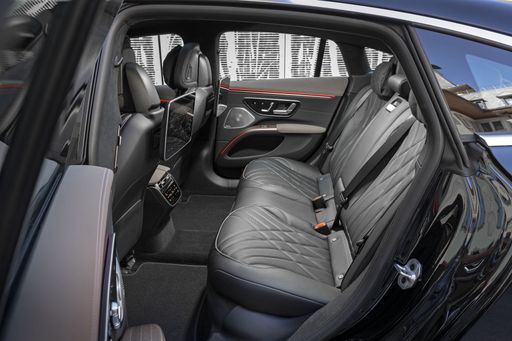 @ group-media.mercedes-benz.com
@ group-media.mercedes-benz.com
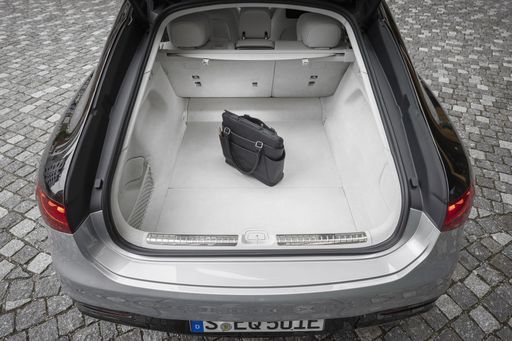 @ group-media.mercedes-benz.com
@ group-media.mercedes-benz.com
Tesla Model Y
The Tesla Model Y stands out in the electric vehicle market with its sleek design and impressive range. Its interior is minimalist yet stylish, offering a spacious cabin that enhances the driving experience. The Model Y also features advanced technology, including an intuitive infotainment system, making it a leader in innovative motoring.
details @ tesla.com
@ tesla.com
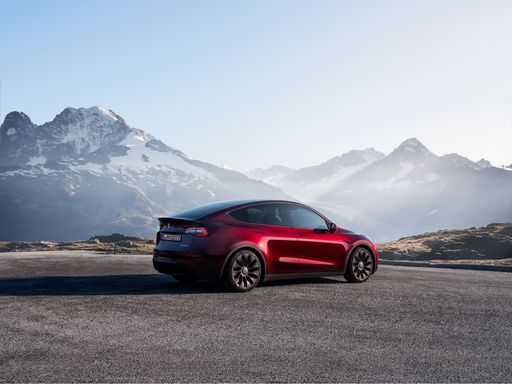 @ tesla.com
@ tesla.com
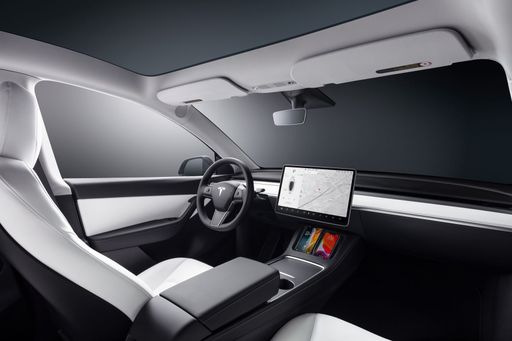 @ tesla.com
@ tesla.com
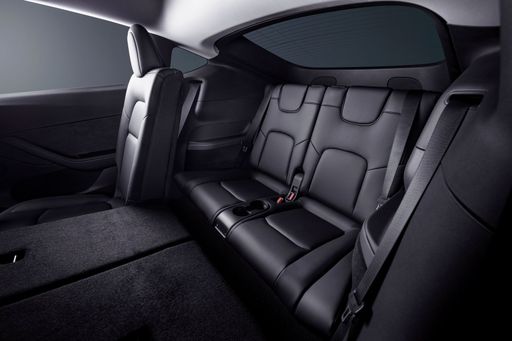 @ tesla.com
@ tesla.com

|

|
|
|
|
Costs and Consumption |
|
|---|---|
|
Price
93900 - 123500 £
|
Price
38600 - 53100 £
|
|
Consumption L/100km
-
|
Consumption L/100km
-
|
|
Consumption kWh/100km
16.5 - 17.2 kWh
|
Consumption kWh/100km
13.9 - 16.2 kWh
|
|
Electric Range
790 - 816 km
|
Electric Range
500 - 622 km
|
|
Battery Capacity
118 kWh
|
Battery Capacity
64.5 - 85 kWh
|
|
co2
0 g/km
|
co2
0 g/km
|
|
Fuel tank capacity
-
|
Fuel tank capacity
-
|
Dimensions and Body |
|
|---|---|
|
Body Type
Hatchback
|
Body Type
SUV
|
|
Seats
5
|
Seats
5
|
|
Doors
5
|
Doors
5
|
|
Curb weight
2545 - 2655 kg
|
Curb weight
1976 - 2108 kg
|
|
Trunk capacity
610 L
|
Trunk capacity
822 L
|
|
Length
5223 mm
|
Length
4790 - 4796 mm
|
|
Width
1926 mm
|
Width
1921 mm
|
|
Height
1512 mm
|
Height
1611 - 1624 mm
|
|
Max trunk capacity
1770 L
|
Max trunk capacity
2022 L
|
|
Payload
550 - 565 kg
|
Payload
418 - 472 kg
|
Engine and Performance |
|
|---|---|
|
Engine Type
Electric
|
Engine Type
Electric
|
|
Transmission
Automatic
|
Transmission
Automatic
|
|
Transmission Detail
Reduction Gearbox
|
Transmission Detail
Reduction Gearbox
|
|
Drive Type
All-Wheel Drive, Rear-Wheel Drive
|
Drive Type
Rear-Wheel Drive, All-Wheel Drive
|
|
Power HP
360 - 544 HP
|
Power HP
299 - 627 HP
|
|
Acceleration 0-100km/h
4.4 - 6.2 s
|
Acceleration 0-100km/h
3.5 - 5.9 s
|
|
Max Speed
210 km/h
|
Max Speed
201 - 250 km/h
|
|
Torque
568 - 858 Nm
|
Torque
420 - 493 Nm
|
|
Number of Cylinders
-
|
Number of Cylinders
-
|
|
Power kW
265 - 400 kW
|
Power kW
220 - 461 kW
|
|
Engine capacity
-
|
Engine capacity
-
|
General |
|
|---|---|
|
Model Year
2024
|
Model Year
2025
|
|
CO2 Efficiency Class
A
|
CO2 Efficiency Class
A
|
|
Brand
Mercedes-Benz
|
Brand
Tesla
|
What drivetrain options does the Mercedes EQS have?
Available configurations include All-Wheel Drive or Rear-Wheel Drive.
The prices and data displayed are estimates based on German list prices and may vary by country. This information is not legally binding.
